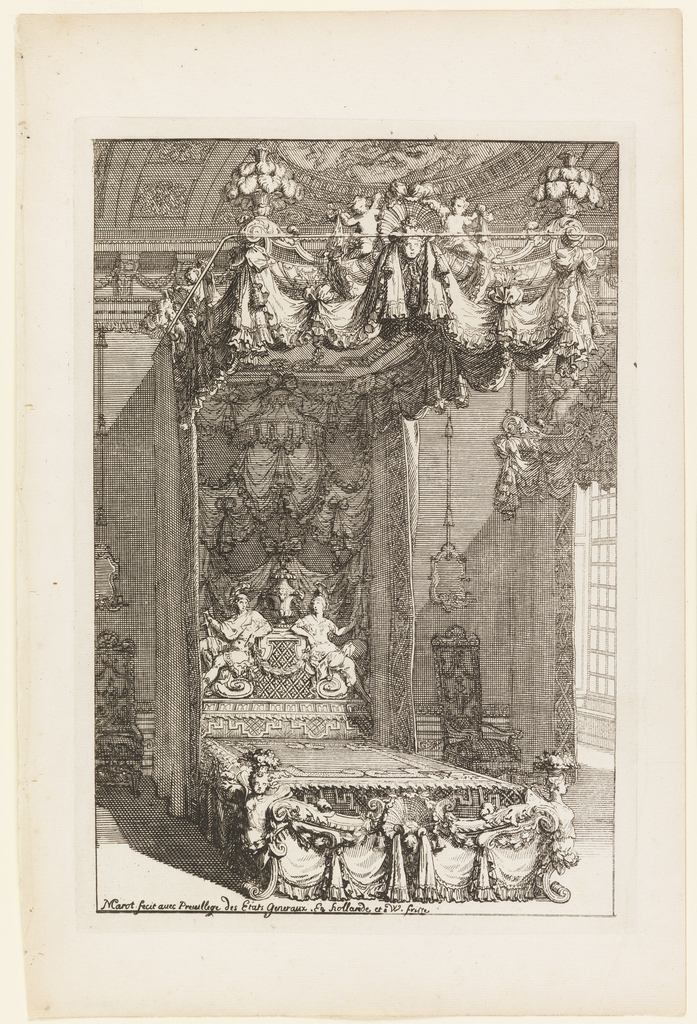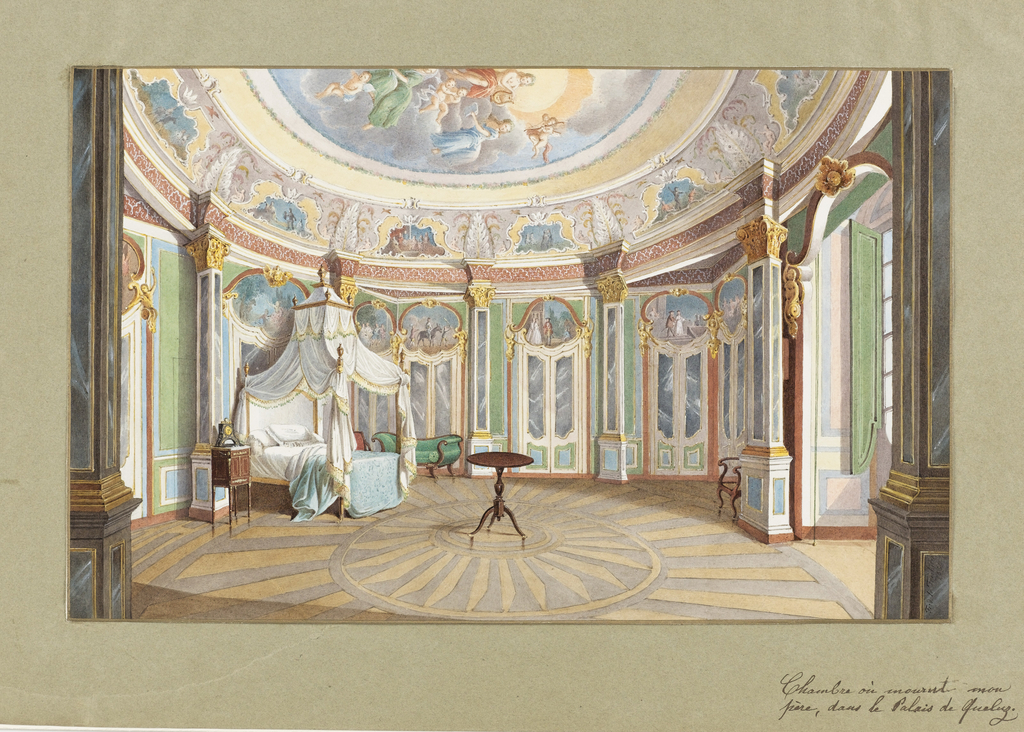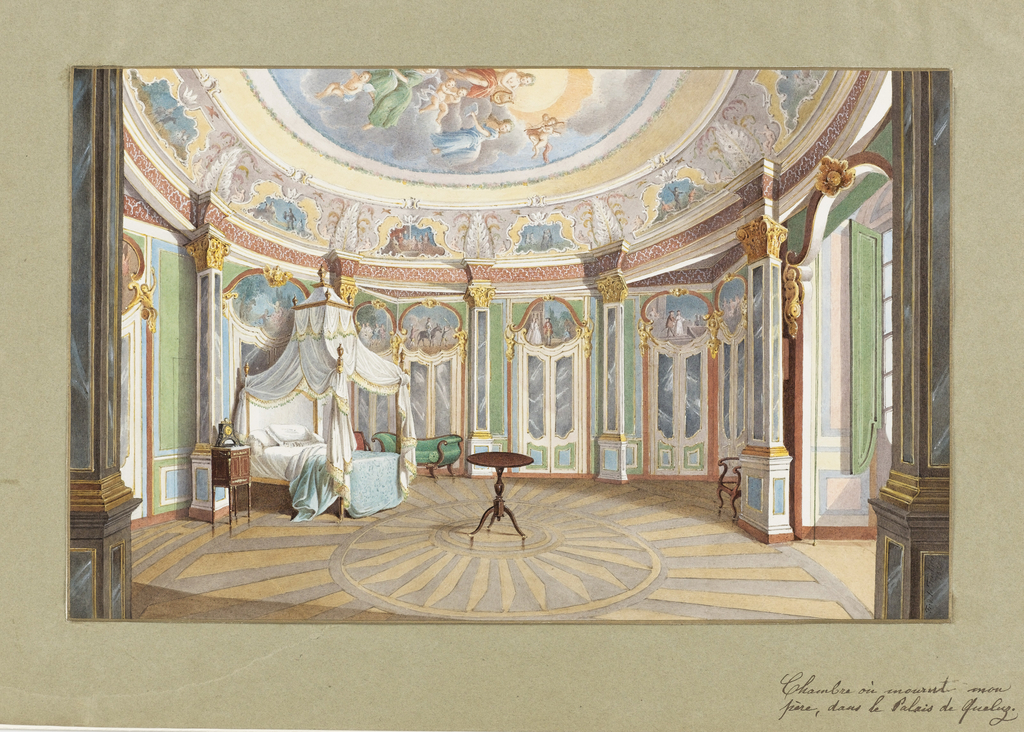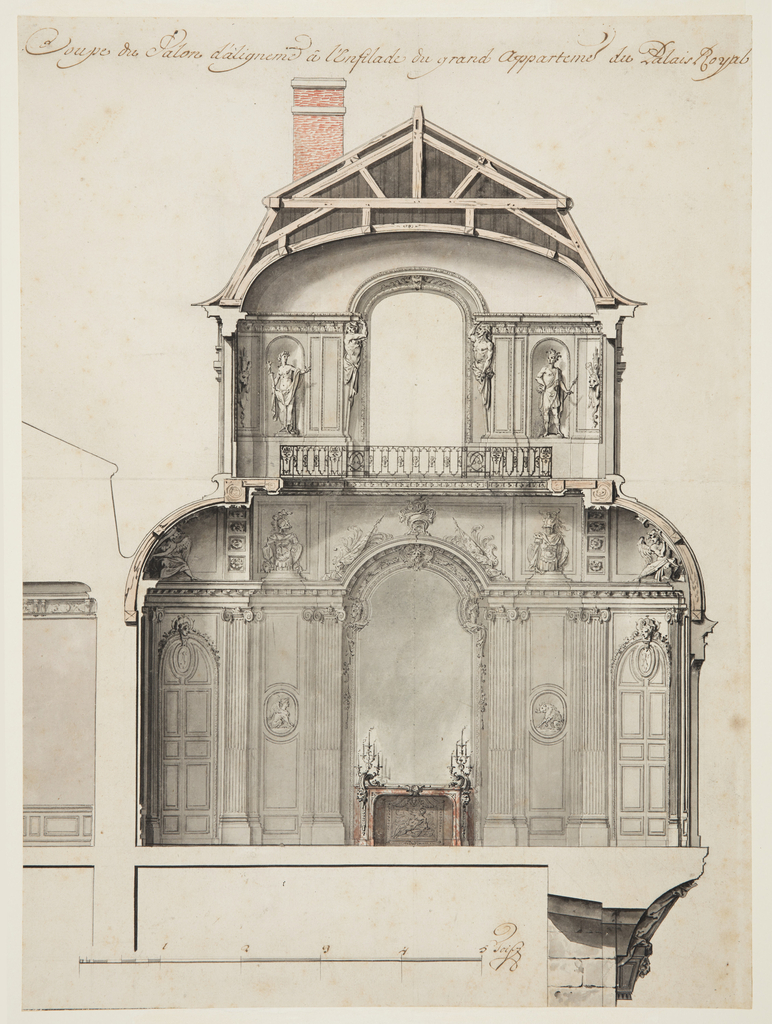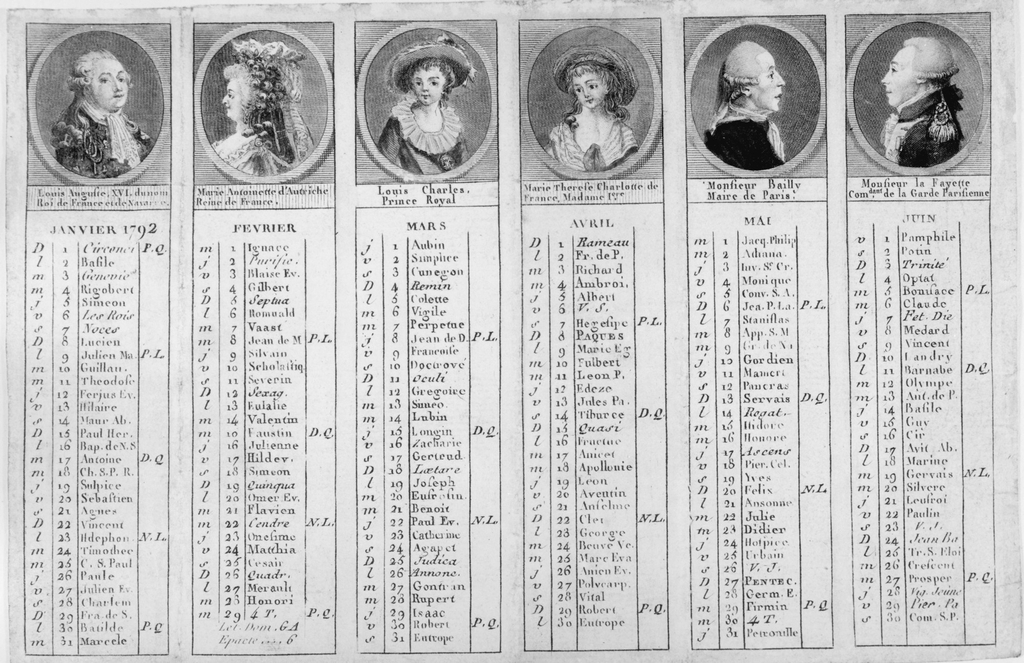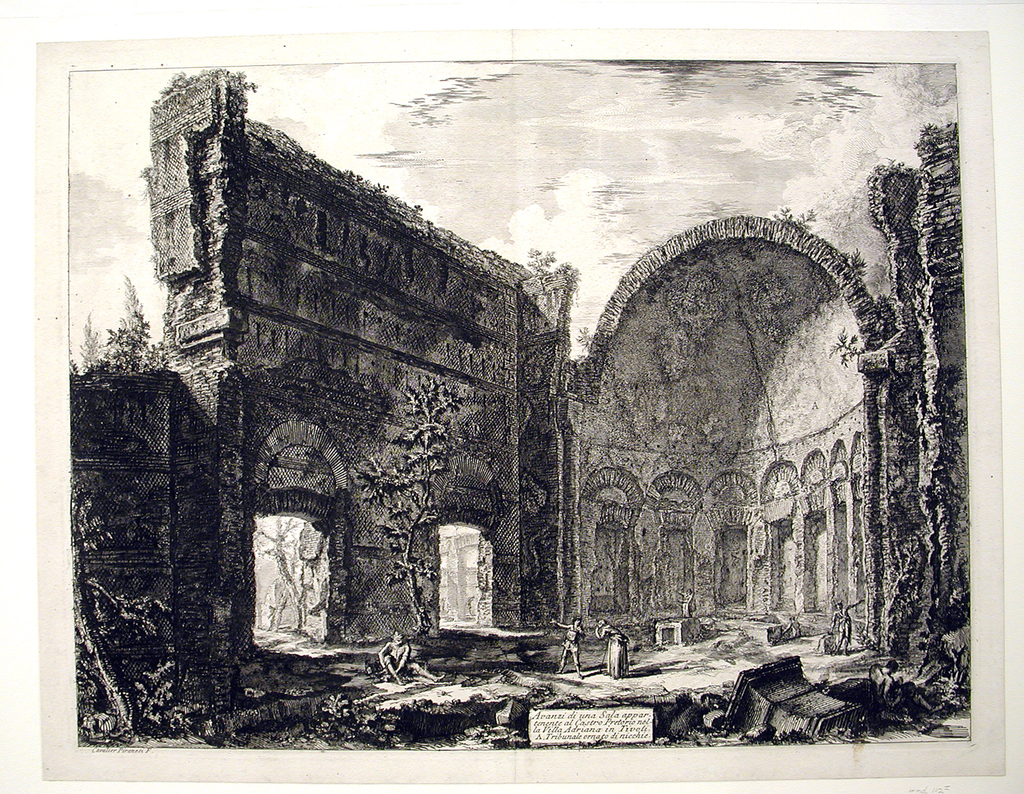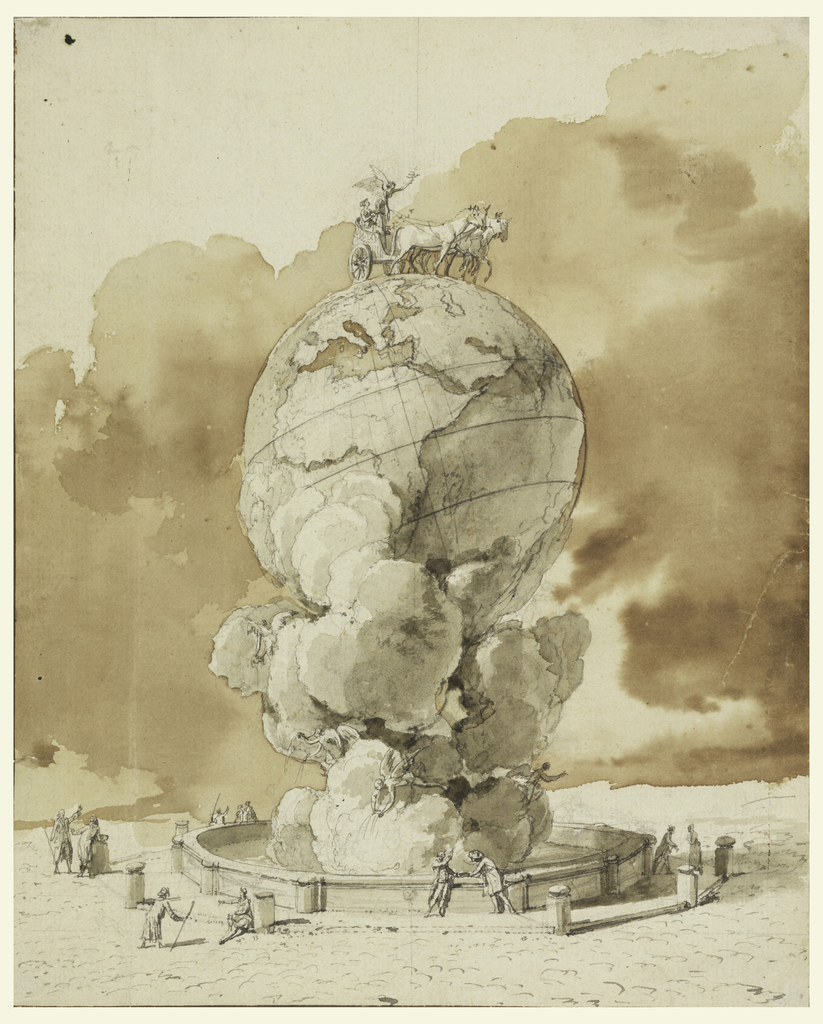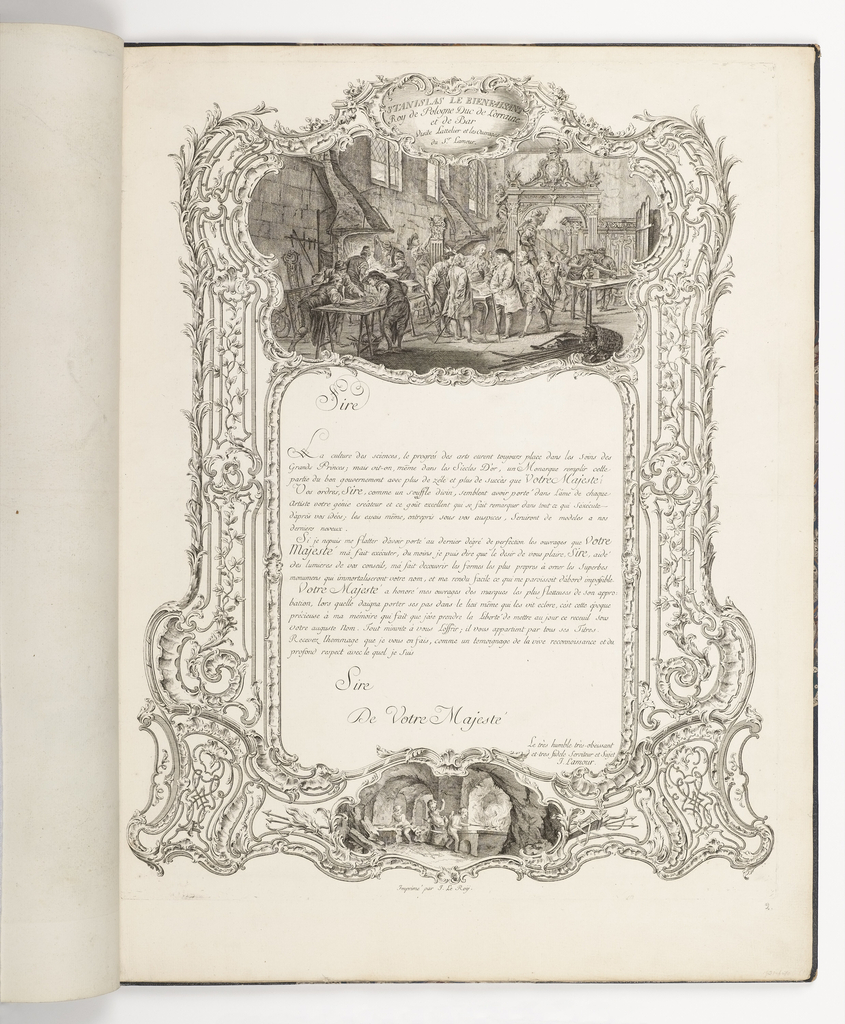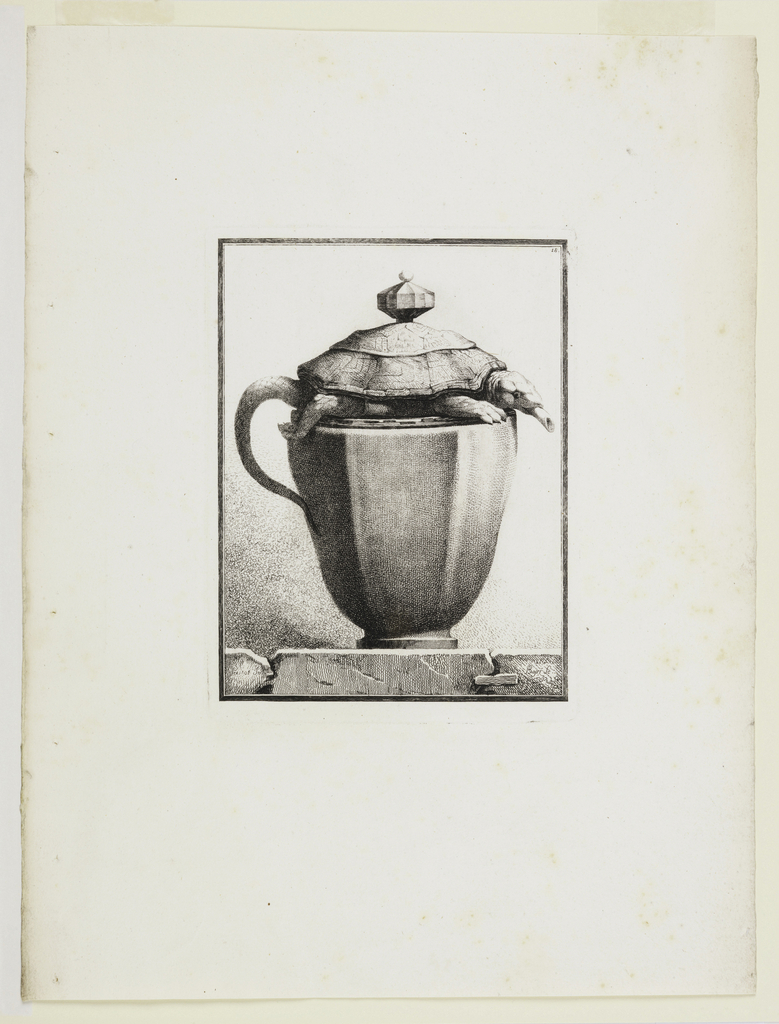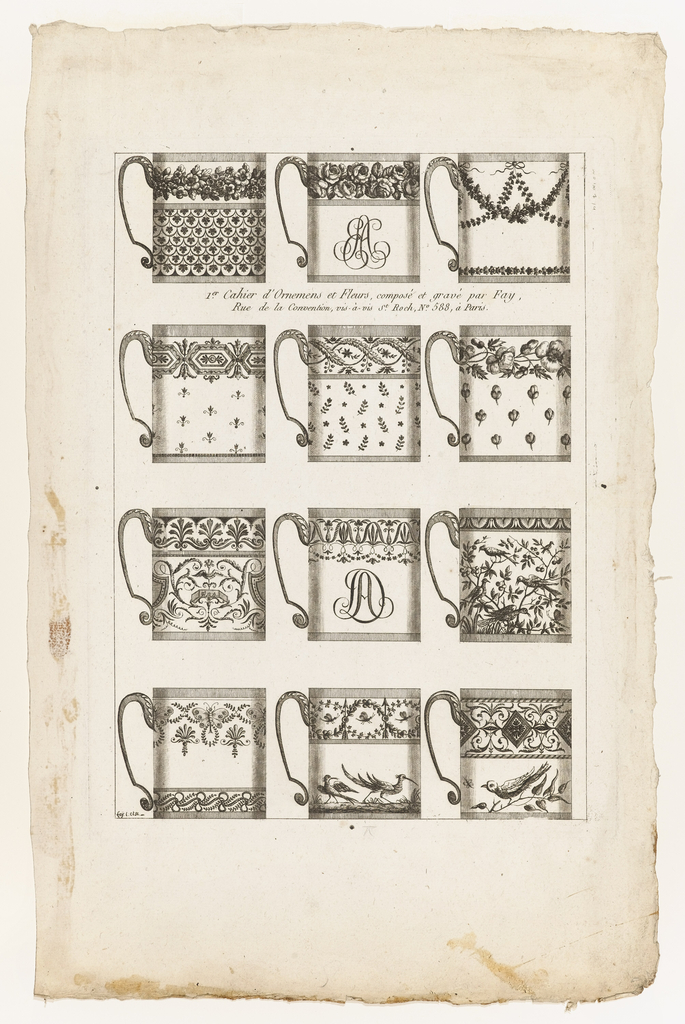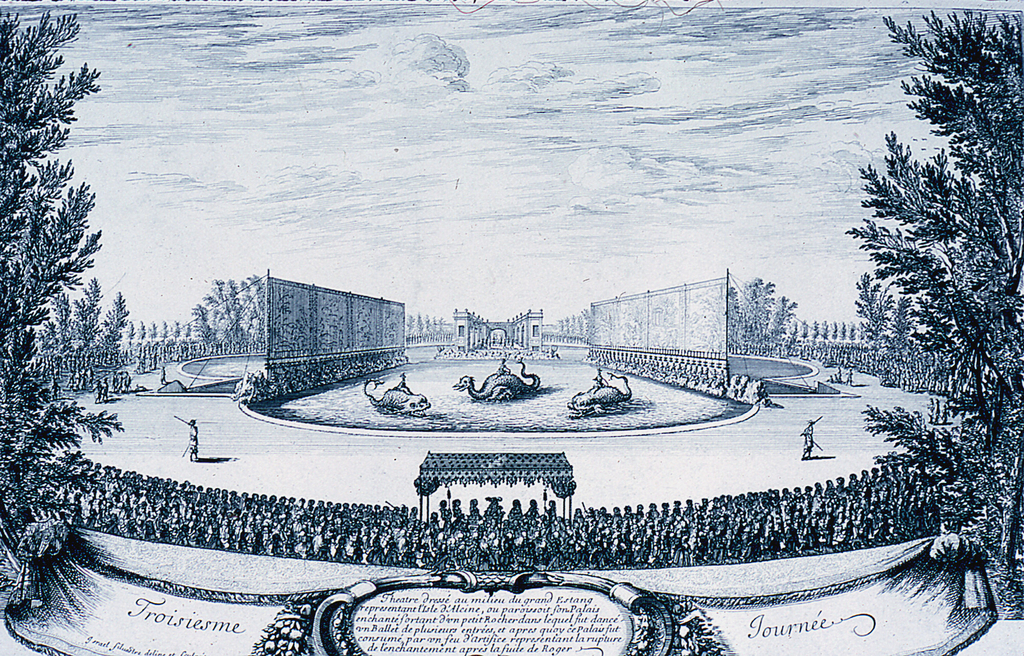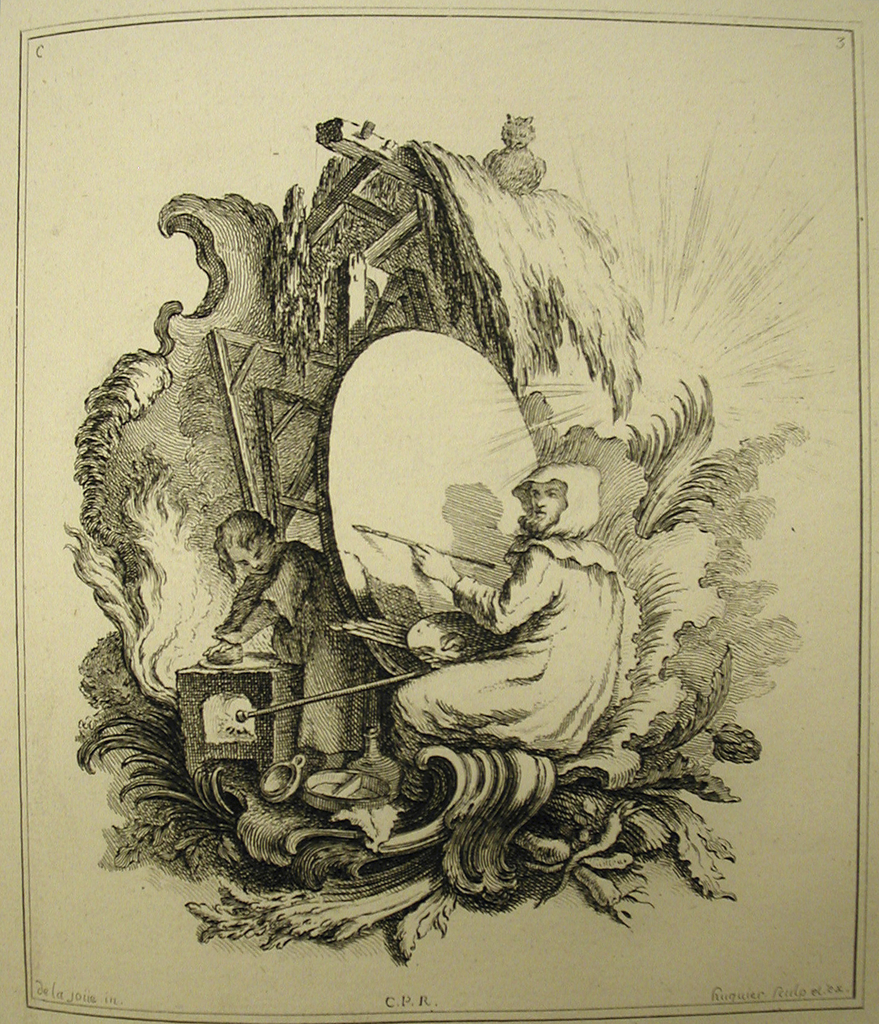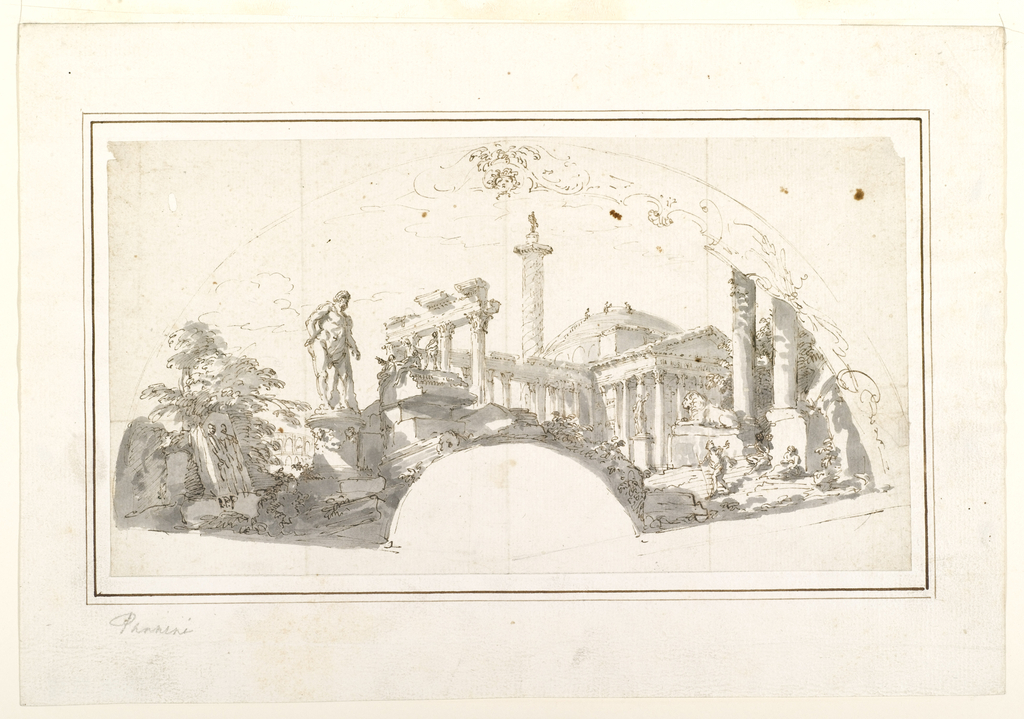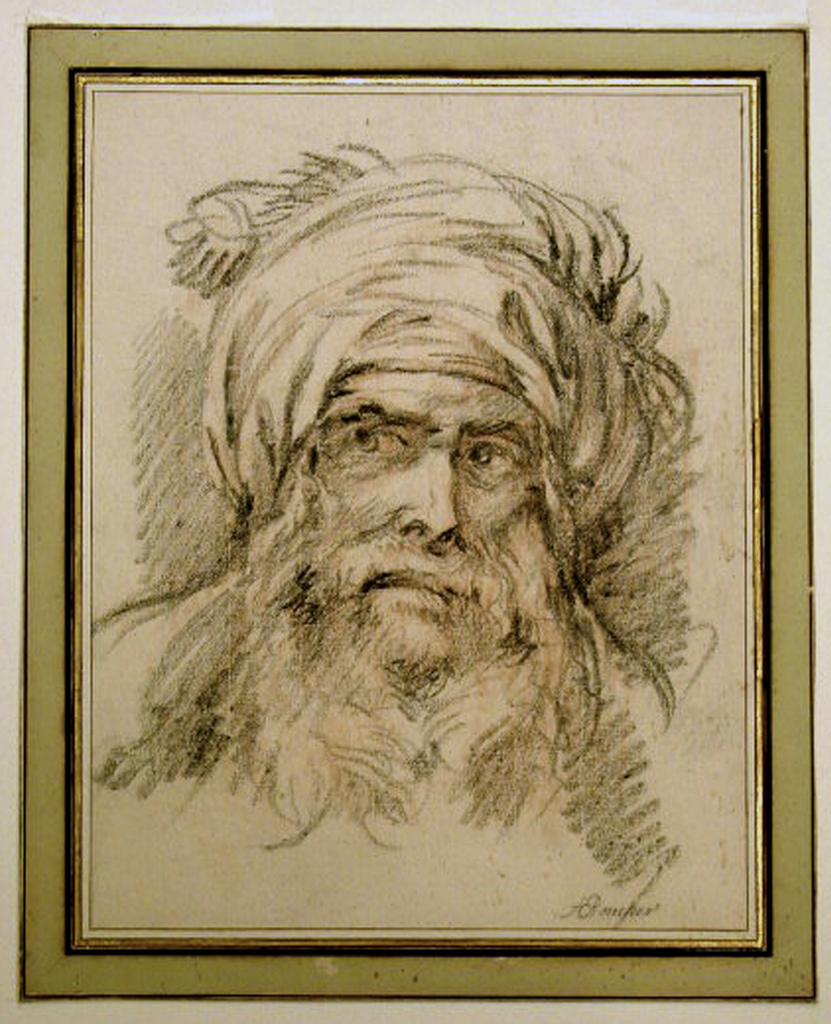This post was originally published on October 9th, 2014. An opulent bed, almost completely dominated by its hangings, pushes at the edges of the border in this etching by the French designer and architect, Daniel Marot. This design is for a state bed (lit d’apparat), a bed that was purely ceremonial rather than functional, and...
This Object of the Day celebrates one of many treasured objects given by Clare and Eugene V. Thaw to Cooper Hewitt, Smithsonian Design Museum. It is republished here in memory of Eugene V. Thaw. Click on this link to read more about the Thaws and their gifts to Cooper Hewitt. This polychrome interior hides architectural, visual,...
This polychrome interior hides architectural, visual, and historic secrets. The drawing depicts the bedroom of King Pedro IV in the Palace of Queluz in the municipality of Sintra, just west of Lisbon. The Palace was originally constructed in the eighteenth century under King Pedro III as a summer home. It remained within the Portuguese royal family...
The Palais Royal lies just on the other side of the rue de Rivoli in Paris, well within eyesight of the Louvre. Among other things, this former royal palace is now the seat of the Council of State (Conseil d’État) and the French Ministry of Culture (Ministère de la Culture). Despite its regal name, it was...
This print is a French calendar for the first six months of the year 1792. The days of each month are lined up in a column, with the top of the column featuring a roundel with a portrait. To the right of the numerical dates are respective saints as per the Catholic calendar. The six...
In 1767 the French writer and critic, Denis Diderot expounded the ”poetics of ruins” writing, “a palace must be in ruins to evoke any interest.”[1] Diderot’s comments were directed toward paintings by the French artist Hubert Robert that often featured real and fantastical Italianate ruins. Such vogue for ruin paintings were inspired by sites frequented...
In the aftermath of the French Revolution, many public squares required new monuments that celebrated Revolutionary ideals instead of the might of the fallen monarchy. Several fascinating proposals followed including a suggestion by Jacques-Louis David who suggested in 1793 that a large statue of Hercules be erected on Place de Pont-Neuf with each limb of...
Dedication pages are as old as the history of publishing—if not older. However, it is rare that we see a dedication page featuring a scene such as the one illustrated here. This print is a dedication page from Recueil des ouvrages en serrurerie (1767), an album of engraving featuring metalwork designs by the French ironmonger,...
It may take a moment to figure out this eccentric vase design: is a tortoise sitting on a faceted plinth or are the two integrated into a single design? This eccentric print actually shows a vase, or an ewer with a lid shaped like a tortoise. Its mouth serves as the sprout, and its tail...
Hot chocolate has been a fashionable drink since the eighteenth century, and the popularization of the beverage also saw the rise of new designs related to its consumption and preparation. This ornament print by the French designer and printmaker Jean-Baptiste Fay shows twelve different designs for chocolate cups. Each cup is decorated with a diverse...
In 1664, Versailles was briefly transformed into a mythical and enchanted fairytale land. From May 7th to 13th, the court of Louis XIV arranged a festival of Les Plaisirs de l’Ile Enchantée (Pleasures of an Enchanted Island) in honor of Anne of Austria, the mother of Louis XIV and the queen Maria Theresa, although the...
The image of the painter in his studio is a popular and common visual theme from the early modern period to the present. This particular cartouche, designed by Jacques de Lajoüe, shows a painter with the tools of his trade arranged in the form of a cartouche (a type of an ornamental frame). With the...
From the eighteenth century, painted fans were one of the most popular souvenirs for any grand tourist visiting Italy. In this period, fans were part of the complex network of courtly behavior and aristocratic social codes, and they were also indispensable elements for coquetry. Such fans were made with a variety of materials such as...
This study by the prolific French artist, François Boucher, offers a rich insight into the practice of collecting drawings in eighteenth-century France. The head of the turbaned man is sketched with black and red chalk, with the white of the paper used as a third shade. The sheet features the annotation, “Boucher” in the lower right...
An opulent bed, almost completely dominated by its hangings, pushes at the edges of the border in this etching by the French designer and architect, Daniel Marot. This design is for a state bed (lit d’apparat), a bed that was purely ceremonial rather than functional, and kept in royal palaces and aristocratic residences in the...
